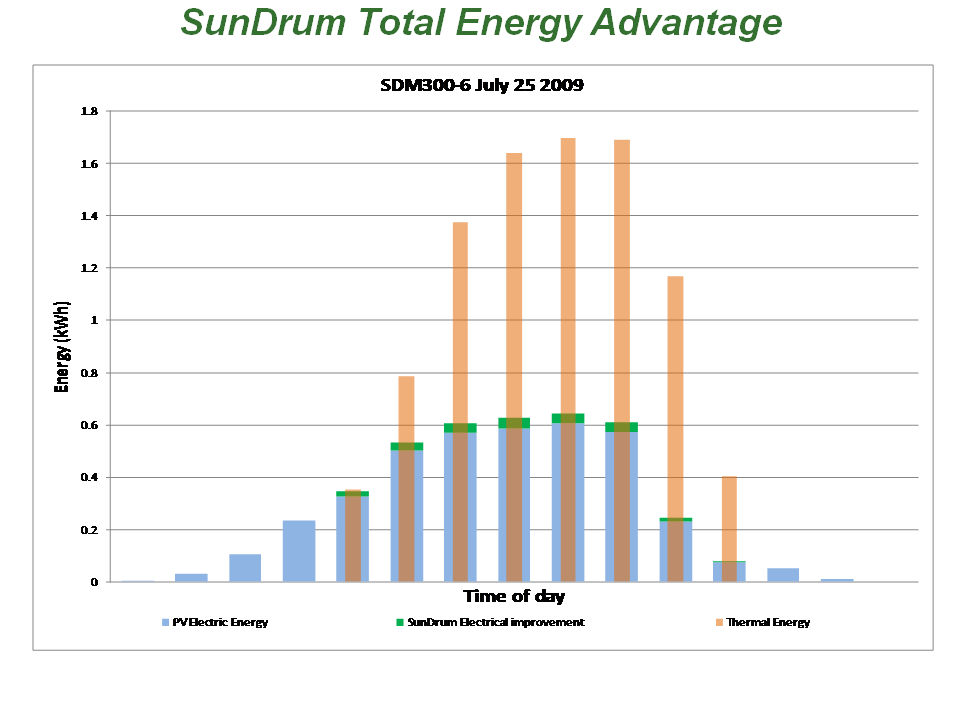In regions where it doesn't frost overnight very often, and where it is often humid or rainy and temperate, the sunpump idea could work well. The cold panels would be very effective at condensing water trying to dehumidify the outdoor air. Likewise, rain contains lots of high density, low grade heat. The large flat plate heat exchangers would work well at night in cooling mode as well. The lack of a forced air outdoor heat exchanger has some serious disadvantages, though.
I'm very optimistic about the development of hybrid solar (PV/T) panels that are built for producing both thermal and electric power. Let me explain.
The majority of the solar PV modules available today have efficiency values in the 15 to 20 percent range. This puts them at electric production rates of about 10 Watts per square foot, or 100 Watts per square meter. To run a typical air-source mini-split unit, it needs around 800 to 1000 Watts per ton of heating or cooling capacity (counting air blower or water pump energy). So for every industry-standard (200 to 250 Watt) panel, the sun provides 1/4 to 1/3 ton of capacity, for an average of 3 to 4 hours per day.
In comparison, flat plate solar thermal panels have efficiency levels that max out in the 50 to 70 percent range. They operate against a temperature gradient between ambient temperature and collector temperature, so as they heat up, efficiency drops down towards the PV panel range. The efficiency slope is pretty linear with respect to temperature gradient, and depends mainly on panel insulation.
With an industry-standard sized PV/T panel, the ~250 Watts of PV power is generated, plus an additional 800 Watts (or less, depending on gradient) of thermal power. This relates to another 1/4 ton of heating capacity per panel! Most PV/T panels are either uninsulated or insulated very little, so that if the panels stagnate in strong sunlight, the maximum panel temperature stays under the maximum rating of the PV cells. When fluid circulates through the thermal collector, the resulting drop in temperature boosts the output of the PV cells. This set of operating characteristics lends itself very well to hot water production and heat pump systems.
 https://dualsun.fr/en/product/2-in-1-solar/
https://dualsun.fr/en/product/2-in-1-solar/
The most effective heat pump systems exploit both types of energy and have a small ground source loop. The electric power is used to run the heat pump compressor (or an electric boiler), the thermal power is used either to heat domestic water or the ground (depending on panel temperature and demand), and the ground loop is used to provide a source (or sink) of heat when outdoor temperature is outside the optimum range for air source operation. The ground also serves as a massive heat battery to store solar energy when it is available but not needed. The concept sounds complicated, but it's really not. All of the monitoring and control can be easily handled by a little chip inside the outdoor unit and a few sensors and valves. Of course, a custom controller adds versatility to the whole system.
Hybrid Solar Technology - Power and Heat with Solar Angel PV-T